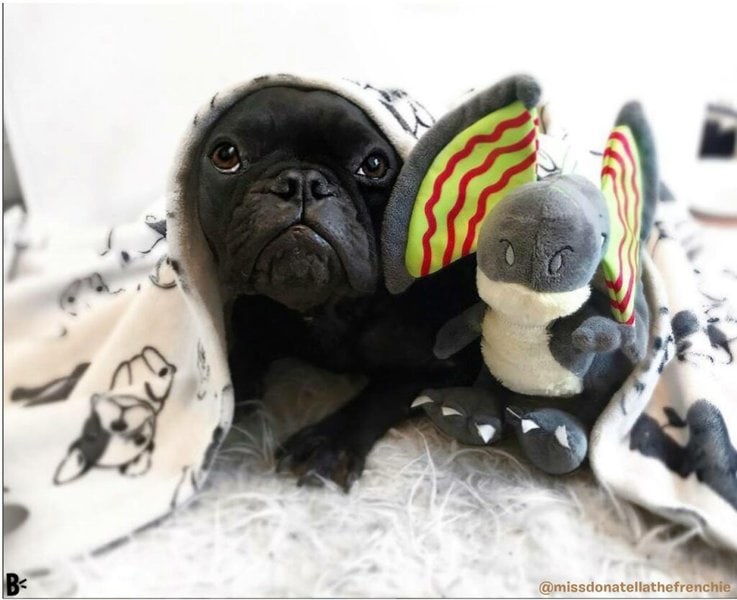Have you ever noticed that your doggie pleads for food right when you intend to feed him? Or when it’s time to go for a walk, your pooch starts wiggling around you? Do you ever ponder whether your dog can tell time?
Yes, dogs can tell time. Much evidence has shown that dogs can tell time! It is an incredible discovery, as it opens up a new world of communication and understanding between humans and their furry friends.
If you want to learn more about how your dog can tell time and how you can use this information to better train and understand your pet, then keep reading. This article reviews the biological mechanisms that allow dogs to tell time, how dogs sense time, and how that sense differs from human’s sense of time. But first, let’s review how a dog’s circadian rhythm helps tell time.
Is It Possible For Dogs To Tell Time?

Yes, dogs can tell time. It is due to their natural ability to recognize and adapt to environmental patterns. Like humans, dogs have a circadian rhythm. This internal clock helps regulate their daily activities, such as sleeping, eating, and playing.
Your furry buddy may not read a clock or watch as humans do. Still, they can use their internal body clocks and environmental cues to recognize when specific events or activities will occur. Here’s how:
Circadian Rhythm
Your puppy has a circadian rhythm, an internal clock that regulates the body’s behavior and helps maintain balance in the face of environmental changes. This rhythm influences many body functions, such as hormone production and digestive processes.
Your doggie experiences light and dark periods throughout the day, and its circadian rhythm is sensitive to these changes. Consequently, you may notice that your four-legged friend is more energetic during the daytime.
Medial Entorhinal Cortex
Recent research has shown that dogs can recognize temporal cues like the passing of time. This ability is made possible by a region in the canine brain known as the medial entorhinal cortex (MEC).
This area is responsible for episodic memory, which is the ability to remember past events and their associated temporal context. This way, your furry companion can use temporal cues to tell time and anticipate events that happen regularly.
Hearing
Another way your fur friend can sense the time of day is through their acute sense of hearing. Dogs can hear higher-pitched noises than humans. So by recognizing when certain cars pass by or when familiar people come and go, your dog begins to understand the rhythms of their days.
Training
Your pup can also learn to tell time by being trained by its owners. Training can include teaching dogs to respond to specific verbal commands at particular times of day or night and using positive reinforcement for good behavior.
Smell
Your cute furry friend relies heavily on their sense of smell to tell time. As the day goes on, a dog’s environment fills with new smells, and the dog can use these smells to track how much time has passed.
Your dog has an incredible sense of smell, many times better than humans. Consequently, dogs can distinguish between smells in their environment, helping doggies keep track of the time of day and when certain events may occur, such as mealtimes.
Additionally, your furry friend can recognize subtle changes in a scent that alert them to changing conditions throughout the day. For example, when a parent comes home from work. When a doggie recognizes these changes, it can tell that a certain amount of time has passed since the last similar occurrence.
How Do Dogs Sense What Time It Is?

Dogs have a sense of time, but dogs don’t analyze time in numeric forms like humans. Instead, dogs use semantic memory to determine the time and predict upcoming events. However, these fur babies can’t tell the time in seconds, hours, or minutes.
Your pup can learn to tell the time for dinner, breakfast, or when they go out. You may see your pet walking around excited about the meal if you regularly feed dinner around 5 pm. Your little friend has learned what time it is.
Dogs see a pattern of activities that point to an upcoming meal. For instance, you may close the blinds and then prepare your supper. Doggies will then hear the distinctive sounds of the blinds rolling down and the can opener taken out of the drawer. This way, dogs observe different signs to learn what time it is.
Do Dogs Have A Sense Of Time When Left Alone?
Yes, dogs have a sense of time when left alone. Dogs can form emotional attachments to people and other animals and miss them if they are gone for too long. In addition, studies have shown that dogs may show distress when their owners are away for extended periods.
Separation anxiety is one of the most common signs that a dog misses their owner during the day. This anxiety manifests in different ways:
- Whining
- Barking
- Destructive behavior
- Pacing around
- Panting
- Salivating excessively
- Having accidents outside of the designated toilet area
Fortunately, there are ways to help dogs cope with being left alone for an extended time. Dog owners can provide appropriate mental and physical stimulation for their pets while they’re away:
- Providing toys that dispense treats or play music can help keep their minds active and provide a distraction while they’re alone.
- Regular exercise is also essential to ensure that dogs remain physically healthy and mentally stimulated.
- Finally, leaving some familiar scents around the house can help soothe anxious pups when left alone.
By taking these steps, dog owners can be sure that their beloved pet is comfortable and safe while they’re away. But before taking any of these steps, you must know what a dog thinks about all day. So let’s have a look!
What Does A Dog Think About All Day?
A dog’s thoughts likely revolve around the daily staples in their life, such as food, playtime, other dogs, and their pet owners. However, the time a dog spends thinking about any particular thing depends on the individual dog and their specific preferences or experiences.
Since dogs rely so heavily on their sense of smell, they are likely to spend a good portion of their day thinking about the smells around them. They can pick up on odors from far away and recognize familiar scents. So even though we may not understand it, the aroma of freshly cut grass or a new dog in the neighborhood provides an exciting mental stimulus for our furry friends.
Can Dogs Tell How Long You’re Gone?
No, it’s a common misconception that dogs can tell how long their owners are gone. Unfortunately, this isn’t the case. Dogs don’t have a sense of time like humans do and can’t understand days or hours in the same way we do.
However, dogs may be able to distinguish between short and more extended periods of absence based on their memories.
Do Dogs Miss Their Owners During The Day?

Yes, doggies miss their owners when they’re away. Dogs may appear sad or look around for their owners when they’re gone and can even become depressed if left alone for too long.
Your dog forms strong attachments with you and relies heavily on you for companionship, food, and security. According to research, dogs develop strong connections with their favorite individuals and dislike being apart for an extended period.
Even while dogs can manage to be alone, they miss you when you’re not around. There are some signs which will help you to understand that your little fur friend misses you:
- Make a mess when they are alone at home to avoid depression
- Sometimes cry when you leave them alone
- Follow you around the house
- Lean against you when you come back home
- Become instantly happy when they see you (see the tail go)
- Wait impatiently for your return
When you leave your dog alone at home for longer, over seven hours each day, they may experience depression or loneliness. In addition, when the dog is left alone for long periods, separation anxiety is more likely to develop.
Separation anxiety is one of the most common signs that a dog is missing their owner during the day. It can manifest in different ways:
- Whining
- Barking
- Destructive behavior
- Pacing around
- Panting
- Salivating excessively
- Having accidents outside of the designated toilet area
How Long Is 1 Day To A Dog?
A 24-hour day is equal to 168 hours in a dog’s life. Since one human year is equivalent to seven dog years, each hour in a dog’s life is equivalent to 7/168, or 0.041, of a human year.
Thus, each day in a dog’s life passes by much faster than a day in a human’s life.
How Long Does An Hour Feel To A Dog?

A 1-hour day for a dog is equivalent to seven hours for humans. However, dogs experience time differently, meaning their days seem shorter than ours. So while an hour may fly by for humans, it can feel like a much longer time for our canine friends.
Dogs have natural abilities that allow them to identify the time of day accurately. Also, their internal body clocks and powerful senses of smell and hearing will enable them to anticipate routines or events. Therefore, dogs can sense the time of day.





